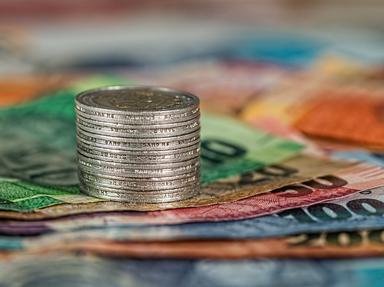Quiz Answer Key and Fun Facts
1. The first coins were minted around 650 BC in the kingdom of Lydia, in modern day Turkey. Before the invention of money, people had to rely on trading in order to exchange goods and services. There is a special name given to these sorts of transactions, which do not involve money. What is it?
2. The first coins were rather crudely stamped lumps of a naturally occurring alloy of gold and silver called electrum. But once coins were introduced, the idea spread rapidly. Soon almost every city-state in the Greek world was producing coins. Standardized weights and purity became the norm, and each city adopted a symbol that appeared on its coins. Sparta, however, was an exception. What sort of "funny money" did the Spartans use?
3. Rome was another city that did not begin producing what we would call coins until quite late in its history. What did the early Romans use as money?
4. What unusual item was used as money by the Aztec civilization?
5. One of the strangest forms of funny money has to be Rai stones. These are huge limestone discs, up to 12 feet across and weighing up to four tons, with a hole in the middle. Where in the world would you go if you wanted to see a Rai stone?
6. If you think about it, the money we use every day is a kind of funny money - just pieces of paper. Yet we can trade them for almost anything, even gold and silver. Where was paper money first used?
7. Many people know that in 1943 the United States minted its one cent coins, or pennies, from zinc-plated steel. Fewer people realize that because of metal shortages during WWII, another coin had its composition changed. Which one was it?
8. Staying with WWII for the moment, you might run across a an old dollar bill with the word "HAWAII" written across the back of it. Why were these notes produced?
9. In 1767, the British ship HMS Dolphin landed in Tahiti. It carried a variety of goods that the British thought the natives might value: beads, cloth, mirrors, etc. But what item, highly prized by the Tahitians, eventually developed into a most unusual kind of funny money used in transactions between the natives and the British?
10. Most of the funny money we've talked about belongs to bygone ages. But in 2009, a new form of funny money appeared: the first decentralized digital currency, which exists entirely hyperspace. It has no backing by any government, is not subject to control, and has no tangible assets. But it has seen rapid growth, and is now accepted by many merchants. What is this new type of funny money called?
Source: Author
daver852
This quiz was reviewed by FunTrivia editor
WesleyCrusher before going online.
Any errors found in FunTrivia content are routinely corrected through our feedback system.

